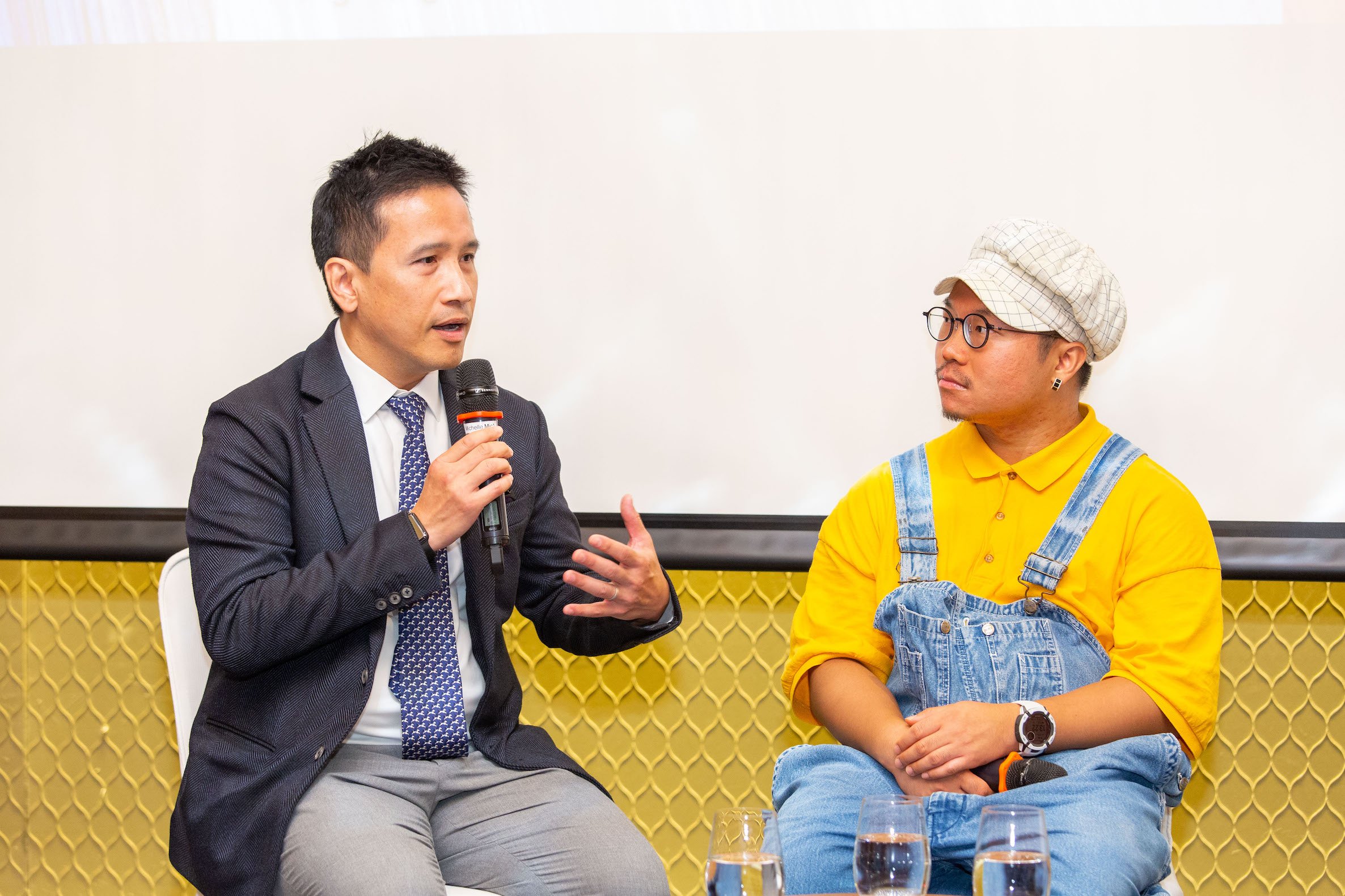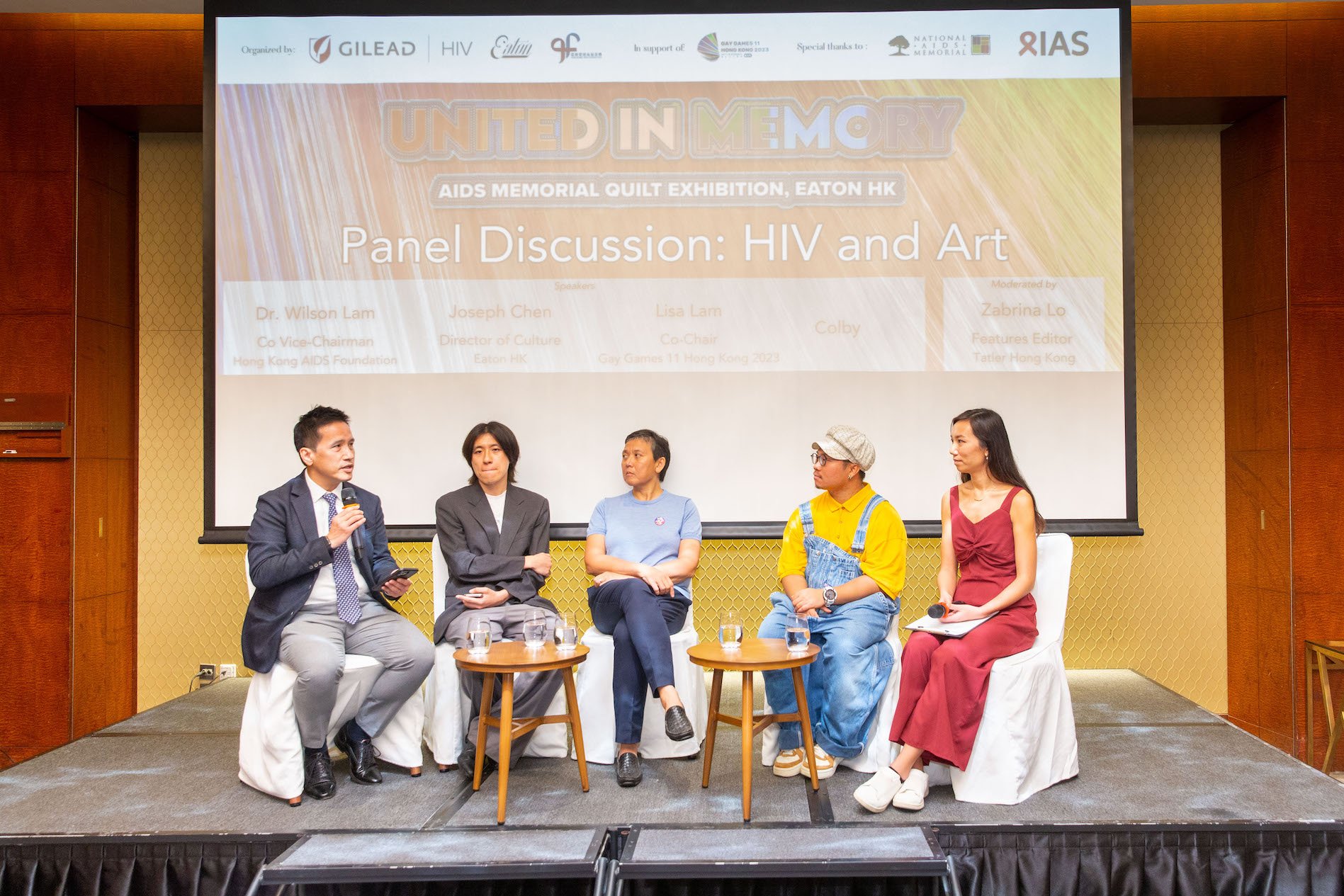Fabric of Life
If you think HIV/AIDS is gone – and the ridiculous stigma of it – think again.
Not too long ago, a mysterious illness started spreading, seemingly concentrated in one specific community, which then spread to the general population. It was deadly, and anyone loosely associated with it was villainised, considered dangerous, and blamed for putting the rest of us at risk. Wait… is this COVID or HIV?
It may seem dismissive to liken to the two viruses, but the reactions they generated are similar. However, either because we’re wiser now or because the people involved were not largely from the LGBTQ+ community (wild guess as to which applies) it was decidedly uncool to beat up elderly Chinese women on the street. That was not the case in 1981 when HIV/AIDS emerged on medical radar. People were dying and governments were certainly not throwing resources at treatments, so in 1985 human rights activist and author Cleve Jones created the first panel on what would become the 50,000-panel AIDS Memorial Quilt. The Quilt has become a memorial to the 40 million that have died from AIDS-related illnesses since it was created, and a reminder that HIV is still with us, still killing us, and still making life hard for people living with HIV (PLHIV) – or poz as some prefer. Infection rates only started dropping in Hong Kong in 2015 (!), and in the second quarter of 2023, 93 people tested positive for HIV, bringing the total to just under 12,000; 2,441 of those have developed AIDS. Nonetheless, discrimination still exists, exclusionary policies remain in place around the world, access to treatment can be restricted, and there are still those among us who think toilet seats are vectors. And that pozes somehow deserve it.
“I’m not sure we’re going to literally get there by 2030. We have to be pragmatic and those are targets to work towards,” says Dr Wilson Lam, Co-Vice Chair of the Hong Kong AIDS Foundation (HKAF) of the so-called Three Zeroes by 2030 – zero HIV infections, AIDS deaths and discrimination six years from now. “No one wants to hear a target 100 years down the road. But I do believe we’ll achieve big, big things by then.”
Lam is at the Eaton HK for the launch of United in Memory: AIDS Memorial Quilt Exhibition, a month-long exhibition showcasing quilts from Hong Kong and The National AIDS Memorial in the United States (digitally) and designed to help eliminate the sitgma of HIV. For Lam, who’s been working in HIV/AIDS since 2002, it’s imperative we know HIV is just another chronic disease. A specialist in infectious diseases, Lam admits he found himself on a learning curve regarding his own misconceptions as an internal medicine student. “After working with my first HIV patient I found myself stigmatising him – as a doctor. It made me re-evaluate my thinking and recognise my own biases. I was obviously wrong, but I had to learn too – and I’m still learning.” The reality of HIV hit home for him when he wound up treating a relative, whose life was a significant eye-opener, particularly regarding the impact of HIV on people’s psyches and social lives. Lam has since joined the HKAF, which provides services and social programmes to patients and carers, counselling and mental health services, education, treatment and crucial peer activities. “Based on feedback the patients love it. We do simple things that everyone does – like trips to Ocean Park – but when HIV patients can do it with other people who understand them, it’s invaluable,” explains Lam.
United in Memory is about memorialising those lost to HIV in Hong Kong and around the world, celebrating pozes still with us, and actively eliminating the negative stigma of HIV that still lingers. Art has always been a tool for acceptance and tolerance, and the AIDS Memorial Quilt is one of the world’s largest ever community art projects. “Art and culture are a powerful tool for people in marginalised communities. It’s a way to express themselves and amplify their own voices,” says Joseph Chen King-yuen, Director of Culture at Eaton HK, the exhibit’s host. “Eaton’s role is to show visitors that Hong Kong is not just about luxury and food, and it includes the LGBTQ community, people living with AIDS and other marginalised groups. But it’s also for education. Younger generations don’t understand that HIV was fatal at one time.”
The show is broken down into four zones, each named for a flower and something its bud represents. The first is “Rose/Love”, which acts as an introduction to the origins, meaning and development of the Quilt, showcases a series of quilts from around the world, and contextualises Hong Kong’s own HIV era. Next up is “Camellia/Courage” in a demonstration of solidarity in the fight against HIV/AIDS. This section is perhaps the exhibit’s most international, and features a digital slideshow of quilts from the original American memorial and serves as a testimonial that makes it clear how universal HIV actually is. “Daffodil/Hope” may be United in Memory’s most affecting section because of the QR codes linked to audio files with personal insights and comments. On top of that, it includes four Hong Kong-made quilts dating back 40-odd years to the earliest days of the pandemic here. The last zone, “Clover/Rebirth” is a black box experience, designed to compel us all to really think about our own crooked notions and how we can make the world more welcoming for PLHIVs. As the saying goes: You have to do the work.
At this point in 2023 it might actually be easier to catch COVID than HIV, yet no one fears being shamed and blamed and told: “You asked for it.” The early reaction to the HIV epidemic was vile, and not even the positive diagnoses of people like NBA superstar Magic Johnson (in 1991) tempered the spread of irrational fear. Tremendous strides have been in the last decades, and HIV is indeed chronic for all, not fatal – at least for some of us. “If you’re talking about someplace like Hong Kong, yes it’s chronic for everyone,” says Lam. “We’re fortunate the government has committed to treating HIV like other illnesses. But it is one of the most expensive chronic illnesses to treat, and we’re talking about a lifetime of treatment. On the grand scale unfortunately that’s not the case,” Lam says, citing a desperate need for resources in sub-Saharan Africa. “It’s not chronic for all there.”
It’s also a case of two steps forward, one step back when it comes to stigmas, something Lam says, “Is frustrating, and social media does play a big role in misinformation.” Socials have given the least tolerant and most hateful among us a platform that was never there before, but it can be a double-edged sword too. “It’s good to know what people are thinking and what their misconceptions are,” theorises Lam. “We know what we need to tackle.”
So in the meantime we all keep plugging away, like Eaton’s Chen, who proudly points out Eaton’s gender neutral toilets, a little detail that creates a safe, inclusive space for transgender people. “There are those who don’t support it, but we just need to keep going – for refugees, for migrants, for LGBTQ+ people – to help build a community for everyone,” he says.
“Every one of us has a role to play in understanding and destigmatising HIV,” Lam finishes. “Nobody asks to be sick, and we don’t ask people with colon cancer why they didn’t eat more vegetables. We don’t blame them for their illness. We treat them. That’s something we should work for.”
United in Memory: AIDS Memorial Quilt Exhibition
Where: Lobby, Eaton HK, 380 Nathan Road, Jordan
Hours: On now thru Sunday, December 3, 24/7
Details: Eaton Workshop




